Abstract
Objective: We have an insufficient scientific data about pre-Halstedian period of breast cancer (BC) history, and about the results of BC treatment. The aim of this article to present authentic scientific data about pre-Halstedian (1867 – 1894) period of BC history, to introduce techniques and results of BC operations.
Materials And Methods: This article based on the original papers of the European, and the American scientists of the end of XIX -beginning of the XX century In 1894, Cheyne, Halsted, and Meyer introduced radical mastectomy for the treatment of BC. Since the end of XIX century and to the second half of the XX century radical mastectomy become the gold standard for treatment of BC. In 1960s, Auchincloss, Madden presented technique of modified radical mastectomy (MRM). In 1972, Madden, introducing MRM wrote: “MRM is not a new technique and it was popular about century or more ago“. In 1875, Volkmann introduced his technique for treating BC; he removed the breast, pectoral fascia, performed axillary nodes dissection.
Results During 25 years, 3–yeasr results of Volkmann operation were significantly improved from 17. 8 %-23 % in 1880/1881 to 35%-45 % in 1891/1900. According to presented data, in pre-Halstedian period, Volkmann operation, become the standard of BC treatment.
Conclusions The period of pre-Halstedian BC history (1867-1894), the results of Volkmann breast operation, the names of prominent European and American surgeons and scientists were forgotten, and our duty to reintroduce it.
Key words
Breast cancer, pre-Halstedian period, Volkmann operation, 3-years results
Introduction
In 1894, Cheyne, Halsted, and Meyer introduced radical mastectomy for the treatment of BC [1, 2, 3]. Since the end of XIX century and to the second half of the XX century radical mastectomy become the gold standard for treatment of BC. In 1960s, Auchincloss, Madden presented technique of MRM (total mastectomy, preservation of the pectoral muscles, axillary dissection) for the treatment of BC [4, 5]. In 1970s, American Cancer Society and NIH Consensus Panel declared : total mastectomy with axillary dissection should be recognized as the current treatment standard [6, 7]. Today MRM is the most commonly performed technique of mastectomy in combined treatment of locally advanced BC. Madden introducing MRM, wrote : MRM is not a new technique and it was popular about century or more ago [5]. The aim of this article is to present authentic scientific data of pre-Halstedian period of BC, to introduce techniques and results of BC operations.
Materials and Methods
This article based on the original papers, and the authentic manuscripts of the European, and the American scientists of the end of XIX – beginning of the XX century.
Charles Hewitt Moore (1821–1870)
Moore was a British surgeon, Vice President of the Royal Medical and Surgical Society of London.
In 1867, More [8] presented the paper about local recurrences of BC after inadequate breast operations. In his paper Moore wrote: It is not sufficient to remove the tumour, or any portion only of the breast in which it is situated; mammary Cancer requires the careful extirpation of the entire organ. Diseased axillary glands should be taken away by the same dissection as the breast.
Summary
- Moore was one of the first, who stressed the importance of removig of whole breast in all cases of BC
- Moore removed the breast and performed axillary dissection in case of diseased lymphnodes
Richard von Volkmann (1830-1889) (Figure 1)
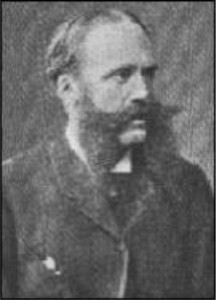
Figure 1. R. Volkmann
Volkmann was the one of the most prominent German surgeons and scientists, Professor of Surgery and head of the Department of Surgery at the University of Halle
A. Original Volkmann breast cancer operation
In 1875, Volkmann introduced new technique for treating breast cancer; he removed the entire breast, liberal piece of skin, pectoral fascia, performed axillary nodes dissection in cases of their enlargement. I make it a rule never to do a partial amputation for cancer of the breast, but remove entire breast, even for a smallest tumors, and at the same time I take away a liberal piece of skin. The skin- defect is, of course, very great when operates in this manner, and the wound, requires a long time for healing; the fascia of the muscle is, accordingly, entirely removed. Volkmann stressed the scientific background of operation: I was led to adopt this procedure because on microscopical examination I repeatedly found when I had not expected it that the fascia was already carcinomatous, whereas the muscle was certainly not involved. It seems to me, therefore, that the fascia serves for a time as a barrier, and is able to bring to a halt the spreading growth of the carcinoma [2, 9]. In his book Beck wrote: Since Volkmann found, on microscopic examination, that even in small and superficially located carcinomatous growths of the mammary gland, the fascia was generally involved, he was naturally led to the conclusion that removal of the tumor alone was an insufficient procedure. [10] According to Halsted and Rodman Volkmann probably was the first to remove the pectoralis muscles-major, in a series of thirty-eight cases, minor in a much smaller number [2, 11]. In 1883, during the 12th Congress of the German Surgical Society, Gussenbauer, Langenbeck and Winiwater, discussing Küster’s presentation, stated: a routine axillary dissection should be done in all patients regardless of the presence or absence of palpable nodes. [4] (Figure 2).
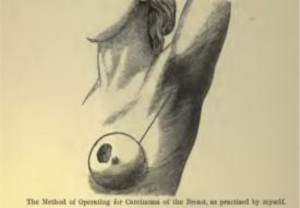
Figure 2. Mastectomy by Gross Tumors of the breast.
Rights: Public Domain, Google-digitized.
Volkmann operation with routine axillary dissection
Since 1883, Volkmann operation with routine axillary dissection becomes the classic operation for treatment of BC. According to our classification of mastectomy, the original Volkmann operation was simple or total mastectomy, in case of axillary dissection – MRM.
In 1894, Halsted wrote: So convinced was Volkmann of the accuracy of his observations and of the truth of his theory that he prescribed a method of operating, which he followed until his death, and which has been adopted by almost every good surgeon up to the present time; his (Volkmann) operation is a classical one [2]. According to Volkmann, “radical cure” was applied to cases that have remained alive and free from recurrence for at least three years after operation [12].
Summary
- In 1875, original Volkmann operation (removal of the breast, pectoral fascia, axillary nodes dissection in cases of their enlargement) was inroduced.
- Since 1883, Volkmann operation with routine axillary dissection become the standard of BC treatment in Germany.
Samuel Weissel Gross (1837-1889)
Gross was a prominent American scientist and surgeon, a President of the Pathological Society of Philadelphia, Vice-President of the Philadelphia Academy of Surgery
In 1880, in his book Gross described new technique of operation: …Within the past seven months , however, I have adopted the principles which I have just enunciated, that is to say, I removed the mamma and its coverings bodily, dissected off the pectoral fascia, and cleaned out the axilla in five cases, and all recovered [13]. In 1888, Gross wrote: The rule to remove the axillary contents in every case should be absolute. I have obtained 21. 05 %, of cures [14].
In his book Rodman stressed: It should not be forgotten, however, that Gross advised and practised removing the pectoral fascia in 1879, and that Volkmann had done so in 1875 [15].
Summary
- In 1879, Gross introduced new technique for treatment BC in the USA.
- Gross removed the breast, dissected the pectoral fascia, performed routine dissection of the axilla. It was a Volkmann operation with routine axillary dissection.
Sir William Mitchell Banks (1842–1904)
Banks (1842–1904) was a Scottish surgeon and scientist, Professor of Anatomy Liverpool University, and Vice-Presidents of section of surgery British Medical Association
In 1882, Banks wrote: About three years ago (1879), I came to the conclusion, that, in every case where the breast is removed, the axilla should be cleared [16]. Butlin emphasized the main propositions of Banks’s techniques: “In every case of BC the operation should comprise removal of the whole mamma, of the skin covering it, and of the fascia over the pectoral muscle. The axilla should be opened and the contents cleared out, whether enlargement of the glands can be detected or not [17]. In 1900, Banks described the main points of the complete operation technique, presented results of treatment, published the intraoperative images made by his house-surgeon Dr. Arkle: Now, the first four series comprise 175 patients and of these 108 have remained free from local recurrence. Of the 108 there have lived 73 over three years (three-year survival – 67. 6 %) [18, 19]. (Figure 3).
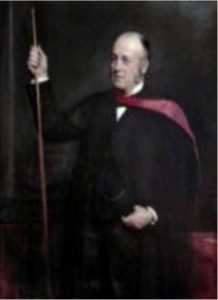
Figure 3. W Banks in public domain
Summary
- In 1879, Banks introduced new operation for treatment breast cancer in the UK
- Banks removed the breast, dissected the pectoral fascia, performed routine dissection of the axilla. It was Volkmann operation with routine axillary dissection
Frederic Shepard Dennis (1850-1934)
Surgeon, Professor of Principles and Practice of Surgery, Bellevue Hospital Medical College, President of the American Surgical Association
In 1891, Dennis described the main steps of his technique: I am removing in every case, the entire breast with pectoral fascia and the lymphatic glands [20].
In 1896, Dennis published a summary of all BC cases operated no later than 1891: Of the 74 cases of pure carcinoma of the breast, the subsequent history of 41 is known, and 3 of these have not yet reached the three years’ limit of time. In these 38 cases there are 17 cases in which a permanent recovery has taken place, allowing the three years’ standard of time to have been reached. This gives 45%, of permanent cures…and a little over 5 per cent of local recurrences. Since the publication of the last statistics in 1891; he has had 15 cases of pure carcinoma of the breast, with no mortality from the operation itself. There are, therefore, 12 cases in which the full subsequent histories are known; two of them suffered from a recurrence of the disease and the remaining 10 have passed the three years’ limit of time. This gives 83 %, of permanent cures in cancer of the breast in the last 15 consecutive cases [21] (Figure 4).
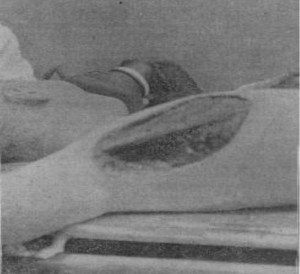
Figure 4. Removed breast [18]
Summary
- Dennis removed the entire breast with pectoral fascia and the lymphatic glands. It was Volkmann operation with routine dissection of axillae
Meeting of the American Surgical Association (ASA) in 1891
In 1891, during the meetings of the ASA well known European, Canadian and American surgeons took part in the discussion on recurrence of BC. Dennis presented a key lecture, in which he said: 75 % of recurrences is high, but it represents approximately the general average, if all the cases are taken into consideration. These figures include cases where incomplete operations performed, that is to say, where the axilla was not open. I am a strong advocate of always removing in every case, to which there is no exception, the entire breast, with the pectoral fascia and the lymphatic glands, as the minimum operation in the most insignificant scirrhus…Dr. Halsted has beautifully demonstrated that the pectoral fascia is involved in many cases of carcinoma of the breast, although to the naked eye, or to the sense of touch, this infiltration may not be apparent… In order to secure immunity from the disease in every case, it is necessary to adopt a radical operation as routine treatment in all cases… Chiene takes a flap from the arm to cover the wound. Stiles, assistant to the Professor of Surgery Chiene suggested a new and reliable method of testing the radical character of an operation by acidum nitrictim, for about ten minutes… The recurrence of carcinoma of the breast influenced by the histological type of the carcinoma itself… A study of the cases of recurrence of carcinoma of the breast shows it to occur „under or close to the scar. Von Winiwarter has also demonstrated that in Billroth’s cases the recurrences originated in the scar tissues. . [20] (Figure 5).
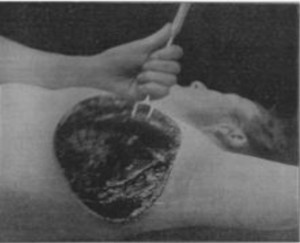
Figure 5. Dissected axillae [19].
Summary
- In 1891, during ASA meeting participants stressed the necessity of the removing of whole breast, pectoral fascia, and of regular cleaning of axillae. It was Volkmann operation with routine dissection of axillae
In the end, we would like to present the original scan from the article, published by Dowd (President of the New York Surgical Society) in 1894. In article the authentic name of Volkmann’s operation, is presented. [22]

Results
The initial (1880-1881) 3-years results of Volkmann operation without routine dissection of axillae operation were not impressive: Volkmann (1880) -17. 8%, Kuster (1881)-21. 5%, Konig (1881)-22. 5 % [12, 23]. In 1883-1894, after introducing Volkmann operation with regular cleaning of axillae, 3-years results were significantly improved: Dennis – 45. 0 % (1891), May – 35. 0 % (1893), Dennis-77. 0 % (1895), average of Rotter, Helferich, Cheyney – 42. 5 % (1896), Banks – 67. 59 % (1900) [22, 23].
Retrospectively, the latest results of Volkmann’s operations with regular dissection of axilla were similar with the results of radical Halsted mastectomy.
The pre-Halstedian period of BC history was chracrerized by significantly high scientific level. The results of BC treatment, techniques of operations, the causes of recurrencies, recommendation on early detection were published, analyzed and discussed; new technique of mastectomies were introduced; prominent European surgeons and scientists presented their innovations in the meetings of ASA. In 1965, Madden presented modified radical mastectomy with removing breast, pectoral fascia, dissection of axillae and preserving pectoral muscle and reintroduced Volkmann’s operation. Even today, 142 years after it introduction, MRM – Volkmann’s operation is a standard of breast cancer management.
Conclusions
The period of pre- Halstedian BC history, Volkmann breast operation, the names of prominent European and American surgeons were forgotten, and our duty to reintroduce it.
Funding: All of authors have no conflicts of interest to disclose.
Competing interests: The authors declare that they have no competing interests.
Authors’ contribution VO is the main author: AO- contributed to the review of manuscript. EO-carried out the literature search. All authors read and approved the final manuscript.
Highlights
- The pre-Halstedian period of Breast cancer history was chracrerized by significantly high scientific level
- The Volkmann’s operations with regular dissection of axilla was the gold standard of breast cancer treatment
- This period of breast cancer history, Volkmann breast operation, the names of prominent European and American surgeons were forgotten.
References
- Cheyne WW (1894) An Address on the Treatment of Cancer of the Breast: Delivered before the Harveian Society of London. Br Med J 1: 289–291. [crossref]
- Halsted WS (1894) The results of operation for the cure of cancer of the breast performed at the Johns Hopkins Hospital from June 1889 to January 1894. Ann Surg 20: 497–55.
- Meyer W (1894) An improved method for the radical operation for carcinoma of the breast. Med Rec NY 46: 746–49.
- Madden JL, Kandalaft S, Bourque RA (1972) Modified radical mastectomy. Ann Surg 175: 624–634. [crossref]
- Achincloss H (1963) Significance of location and number of axillary metastases in carcinoma of the breast: a justification for a conservative operation. Ann Surg 158: 37–46.
- Policy Statement on Surgical Treatment of Breast Cancer American Cancer Society (1973) CA Cancer J Clin 23: 341–43.
- The treatment of primary breast cancer: management of local disease (1979) NIH Consens Statement Online 2: 29–30.
- Moore CH (1867) On the Influence of Inadequate Operations on the Theory of Cancer. Med Chir Trans 50: 245–280. [crossref]
- Dennis FS (1896) Diseases of the female breast.In: Dennis FS, Billings JS, editors. System surgery, v. IV, New York and Piladelphia: Lea Brothers 927–928.
- Beck C (1907) Diseases of the breast.In: Beck C, editor. Surgical disease of the chest, Philadelphia: P Blakistone’s Son 321.
- Rodman WL (1908) Diseases of the breast, with special reference to cancer. Philadelphia: P Blakiston’s Son
- Williams WR (1894) Treatment of acinous cancer. In: Williams WR editor. Monograph on diseases of the breast their pathology and treatment with special reference to cancer. London: John Bale and Sons 364.
- Gross SW (1888) Tumors of the breast. In: Mann MD editor. A system of gynecology by American authors.v.2, Philadelphia: Lea Brothers 314.
- Gross SW (1888) Tumors of the breast. In: Mann MD editor. A system of gynecology by American authors.v.2. Philadelphia: Lea Brothers 311–318.
- Rodman WL (1908) Diseases of the breast, with special reference to cancer. Philadelphia: P Blakiston’s Son: 273
- Banks WM (1882) On free removal of mammary cancer with extirpation of the axillary glands as a necessary accompaniment. Br Med J 2: 1138–41.
- Butlin HT (1887) On the operative surgery of malignant diseases. London J. & A. Churhill 359–388.
- Banks W (1900) The Lettsomian Lectures being Practical Observations on Cancer of the Breast: Delivered before the Medical Society of London. Br Med J 1: 817–24.
- Banks WM (1902) A Brief history of the operations practiced for cancer of the breast. Br Med J 1: 5–10.
- Dennis FS (1891)Recurrence of carcinoma of the breast. Transactions of the American Surgical Association 9: 221 – 29.
- Dennis FS (1896) Diseases of the female breast. In: Dennis FS, Billings JS editors. System surgery, v. IV, New York and Piladelphia: Lea Brothers 931–32.
- Dowd CN (1898) III. A Study of Twenty-nine Cases of Cancer of the Breast submitted to Operation. Ann Surg 27: 285–302. [crossref]
- May B (1897) The Ingleby Lectures on the Operative Treatment of Cancer of the Breast. Br Med J 149: 1456–58